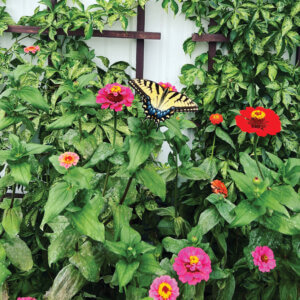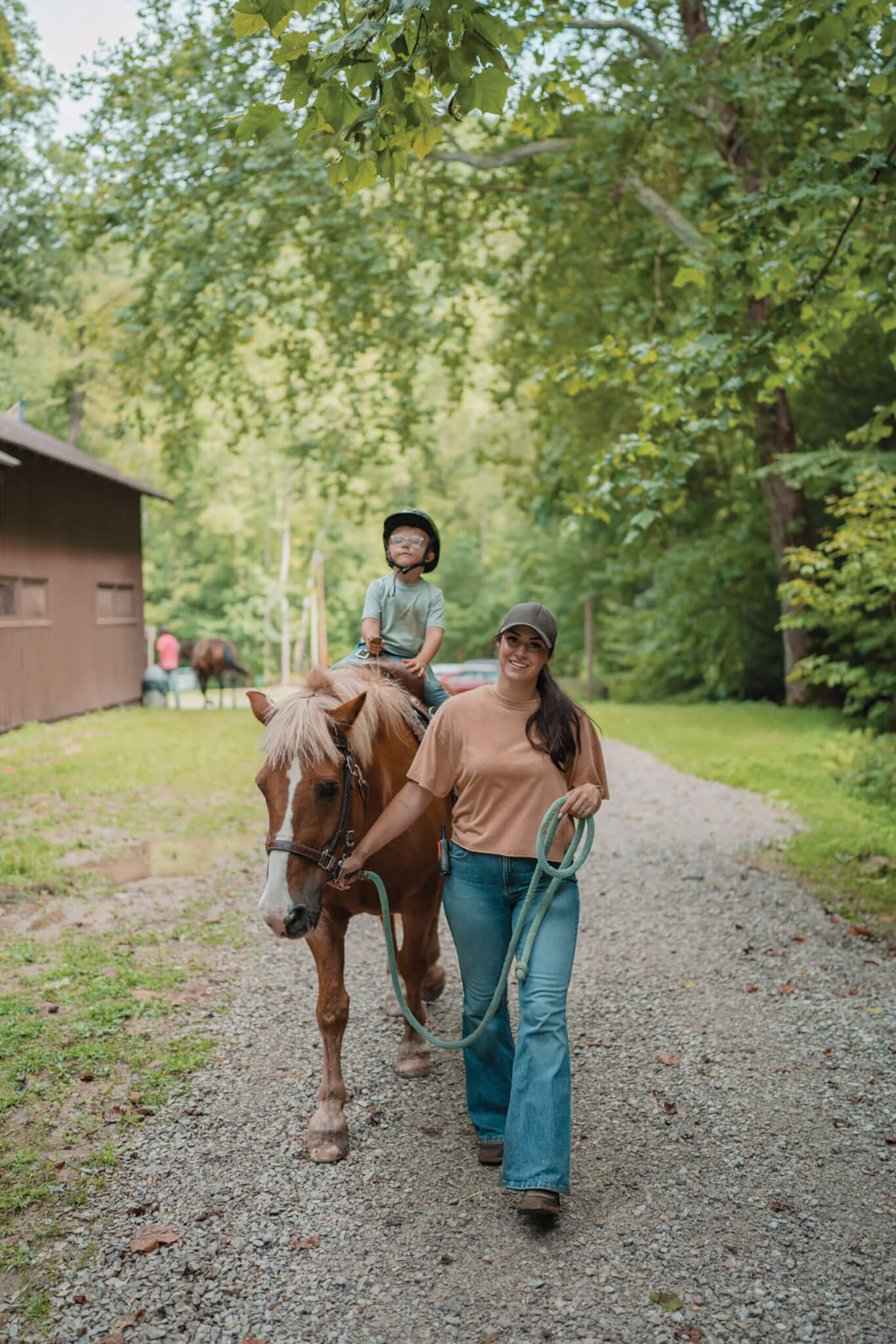
After a decade, Kanawha State Forest is trotting out a new equine program.
This story was originally published in the June 2024 issue of Wonderful West Virginia. To subscribe, visit wonderfulwv.com.
Written by Laura Jackson
Photographed by Allie Jeffries
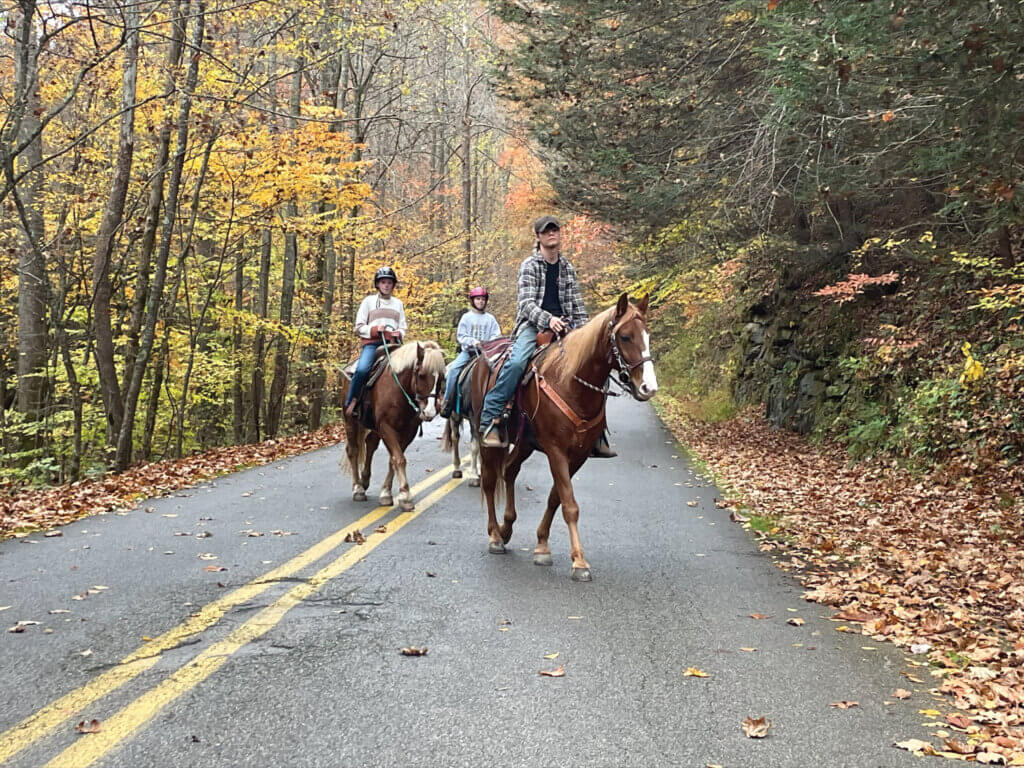
For the first time in years, Kanawha State Forest is echoing with the sound of hoofbeats. Not the pounding of fast feet, but the clip clop of sturdy trail horses making their way through the woods, along with the joyful chatter of excited riders happy to be astride. The stable has been shuttered for a decade—but now, the horses are back, and the stalls are full.
The Kanawha State Forest stable has been in and out of operation for around 30 years, but has been in disuse for the past 10. Clark Sanford, the Kanawha State Forest superintendent, wanted to bring equine activity back and offer guided trail riding, one of a small number of sites offering it in the region.
“We are so close to Charleston and this large population center,” he says. “I wanted to try to provide that recreational opportunity for visitors to the capital and to Kanawha State Forest. I felt it was good stewardship of the existing structure to renovate it and do some repairs to bring it back rather than let it fall into disrepair or try to build something new. Time and effort and money had already been put into it in the past.”
Many outdoor recreational activities involve a heavy up-front cost, whether it’s investing in boots, backpacks, and hiking gear, buying a mountain bike, or paying to support a horse. Guided trail riding by the hour is an affordable alternative. “Now, people can come out and experience that recreational opportunity for a much lower cost,” Sanford says.
Rebuild and Renew
Horses began hitting the trails just before Memorial Day in 2023.
While many paths wind through Kanawha State Forest, horseback riding is restricted to any improved or unimproved road surface and select additional trails: the Blazing Saddles Trail, Tuskegee Trail, Bob Ward Pathway, and Hoffman Hollow Interpretive Trail.
The majority of the trail system was originally designed for pedestrians and mountain bikers and is off-limits to horses. “There are a lot of trails out here in Kanawha State Forest,” Sanford says. “They’re legacy foot trails, and they’re narrower. When they were constructed, they weren’t designed to have the weight of a horse on them.” The prospect of horses going up a narrow trail and having to pass a mountain bike coming down worried park officials, so the two categories of trail remain largely separate.
Sanford says that the initial response to the stables’ revival was mixed, but all types of outdoor enthusiasts can use the trails. “There’s always concern when you have multi-use trails in the forest,” he says. “It can be a lot of work to create recreation opportunities for multiple groups. There was some concern that certain trails or roadways might have to be closed to ensure the horses’ access to them. But we were able to maintain multi-use on those trails and the roadways. We can cater to the needs of the stables vendor as well as the needs of other forest users.”
Whether on foot or in the saddle, Kanawha State Forest is easy to access and enjoy. The 9,300 acres of green space lie only nine miles from downtown and six miles from Corridor G. Yet visitors, hikers, and riders will see a wide variety of species in one of the most biodiverse ecosystems on earth.
“You’ll see a lot of native flora and fauna in the mature hardwood forests,” Sanford says. “And you’re going to see a little bit of difference in those species because of the elevation change. At lower elevations, you’ll see things like sugar maple and sycamores and rhododendron. And then up top some really large white oaks, black oaks, some of the pine species. Then we’ve got another portion of the forest—Hoffman Hollow Interpretive Trail—which is old growth. We’ve got some poplar, some white oak, and some black oak there that are older than this country.” Roughly 5% of the forest is on the national old-growth registry, and some of the trees there are estimated to be 350 years old.
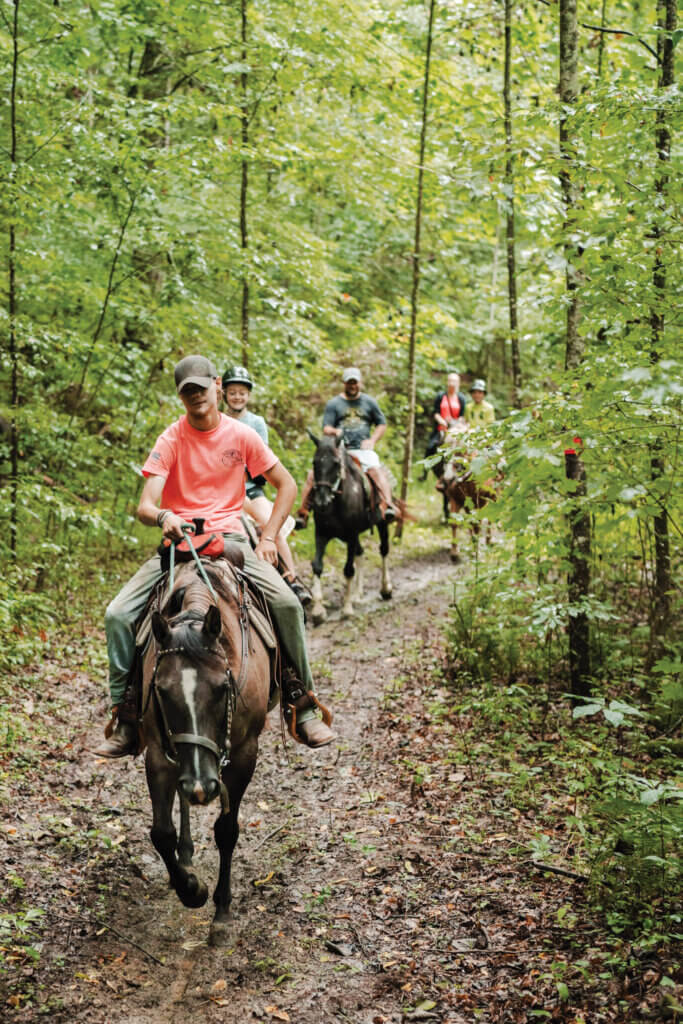
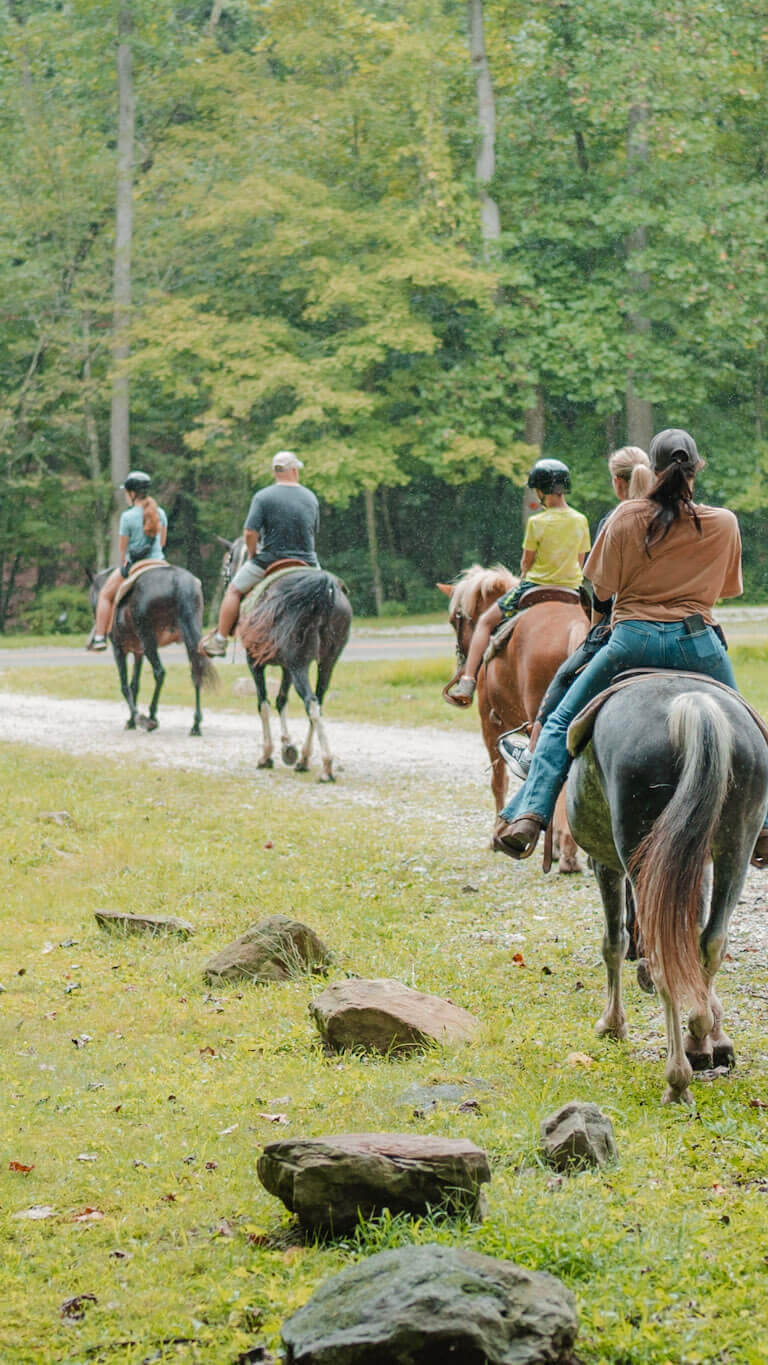
Stirring Up Dust
When it came time to spruce up the stable, much of the repair and restoration work was done by the Kanawha State Forest maintenance crew. Additionally, almost $70,000 was provided by the West Virginia Horse Coalition to revitalize the stable. The project included a new roof and shingling, a new septic system, new water lines, new electric, and other structural repairs necessitated by a leaking roof.
Aesthetic work was done by the current vendor, Circle B Stables, who went on to repaint and install new siding. Additional repairs and renovations are scheduled for this year. Both full- and part-time staff maintain the stables, and many have a history with the property.
“I used to board a horse there when I was little,” remembers Circle B owner Brittany Taylor, who grew up in Fayette County. “I got approved to operate the concession at Kanawha State Forest, but it was about seven months before we could open.” Some of the structure was so rotted that the lumber had to be replaced. “They don’t make that kind of lumber anymore,” she says. “So we had to take a piece off and go to a sawmill and have them match it up for us. They actually cut it out of trees from their farm. Then we painted, we did some refreshing, we revamped it, and we opened up for business.”
Circle B has made the customer experience a priority and continues to work on improvements. During the 2023 season, rides took about 40 minutes. Now, staff members continue to scout trails in hopes of offering much longer ones. Additionally, they go the extra mile to accommodate visitors with disabilities and those who need extra help.
“We don’t have an age limit, which is really awesome compared to most other places,” Taylor says. “We don’t have any restrictions as far as disabilities. We try really hard to accommodate everybody that wants to ride. My dad works with me, and if a child isn’t able to ride on their own, because they’re just scared or they’re not ready, he’ll lead the horse on foot along the trails.”
Even guests who have no experience will find themselves in good hands. People are always welcome to see the horses. Beginner riders can take lessons, even if that means simply brushing and grooming or starting with pony rides. Moreover, riders can rest assured that all mounts will be rock-steady and trail-worthy.
“All of my horses go through months with a guide,” Taylor says. “We put them up against a bunch of tests. We tested them on trails with mountain bikers and hikers screaming and yelling. We make sure they’re really ready for the trails and for the customers who don’t know how to ride.”

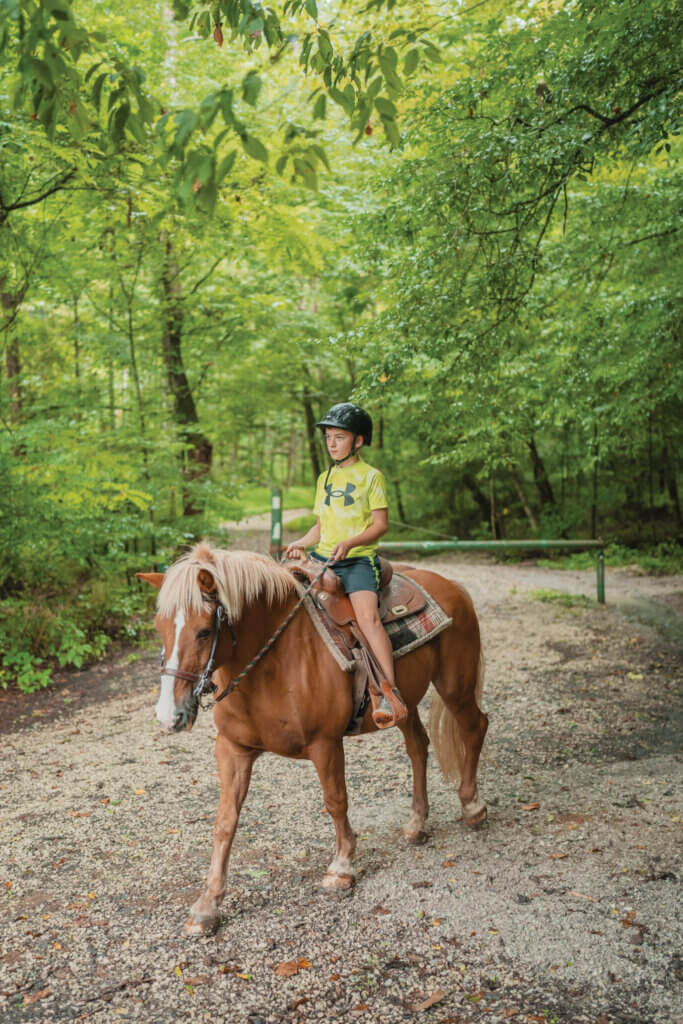
In addition, the stable welcomes birthday parties, school field trips, and photo sessions as well as lessons for more experienced riders. Homeschool students and other groups can utilize a classroom above the stable. Most of the grounds are accessible, and the staff is ready to assist in any way possible.
In addition to the staff, a group of volunteers lends hands and manpower for tasks that range from cleaning stalls to bathing horses. Some grew up with horses, while others didn’t have the option to be in the equine industry. Taylor says some volunteers are looking for a learning experience and hope to work their way toward a job at Circle B. All, however, love horses and want to bring the joy of horseback riding to visitors.
Circle the Wagons
As Circle B begins its second year, Sanford reports the endeavor has thus far been a successful one. The program has been well-received by the community, including those who had some initial concerns. There’s been an increase in traffic to the forest since the stable’s opening. “We’re hoping that, moving forward, it becomes another integral part of the recreation opportunities here,” he says.
The enhancements and the hard work have paid off. A steady stream of guests visited Circle B during its first season. Many recalled their own youthful experiences at former iterations of the stable. One visitor shared a memory with Taylor when she discovered a surprise in the barn.
“There were two horse nameplate signs in the stable from the previous experience of it being open,” Taylor says. “A customer came in, and they had been her mom’s horses. So we gave the nameplates to her. A lot of people have memories growing up, going to Kanawha State Forest. And it’s awesome to hear people’s stories about the horses they rode.”





